Breastfeeding is best for babies
Thank you for visiting our website. The content is only for healthcare professionals so we cannot grant you access.
Please read this important notice first
By clicking the continue button, you will be able to view information about Similac infant milks and other products. If you choose to proceed, you are accepting that Similac is supplying this information at your individual request for information purposes. Please consult a healthcare professional to make an informed choice on feeding your baby milks & weaning onto solid foods.
Breastfeeding is best for babies and provides many benefits. It is important that, in preparation for and during breastfeeding, you eat a healthy, balanced diet. Combined breast and bottle feeding in the first weeks of life may reduce the supply of your own breast milk, and reversing the decision not to breastfeed is difficult. The social and financial implications of using an infant milk should be considered. Improper use of an infant milk or inappropriate foods or feeding methods may present a health hazard. If you use an infant milk, you should follow manufacturer’s instructions for use carefully – failure to follow the instructions may make your baby ill.
I do not wish to continue
A guide to comfortable breastfeeding positions
There is no ‘best’ position for breastfeeding, but it is easiest when both you and your baby are comfortable and relaxed. Because every mum and baby are different, some positions can work better than others.
Some experts suggest alternating positions so your baby will not latch on and apply pressure at the same spot every time. If you are having trouble or discomfort breastfeeding then please refer to our guide to common breastfeeding problems and solutions.
.png)
Here are some common breastfeeding positions:
The cradle hold
Sit in a comfortable chair with support for your arms and back. Try not to hunch your shoulders. Support your breast with your hand in a cupped C-shape. Place your baby across your stomach, tummy to tummy. Your baby's head should be in the bend of your elbow, and their mouth should be directly in front of your nipple. Use a pillow to support your arm. If correctly positioned, your baby's body should form a straight line from ear to shoulder to hip. Tuck their lower arm around your waist, out of the way.
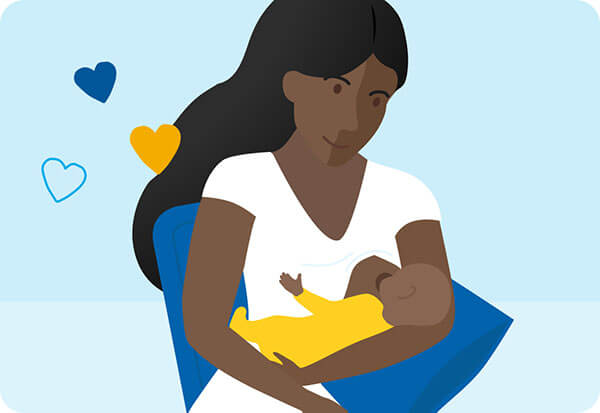
The rugby ball hold
Like a rugby player cradles a rugby ball, you will cradle your baby over your arm. This lets you see if he is latching on properly.
This position often is preferred by mums who:
- Have large breasts
- Are concerned about latch-on
- Have a small or premature baby
- Are sore from a cesarean birth
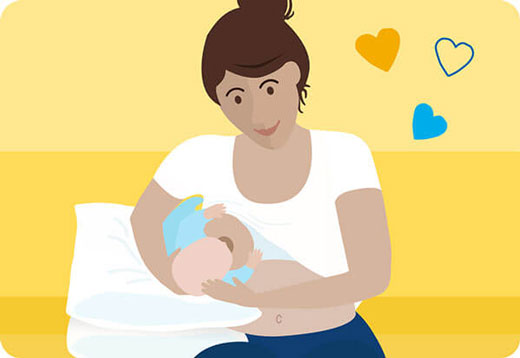
Place pillows at your side to support your elbow and your baby's bottom. Tuck them into the side of your waist. Place their head in the palm of your hand. Support the base of their head between your thumb and forefinger. If your baby seems uncomfortable, place a soft blanket between your hand and their head for padding.
The cross-cradle hold
This position often is preferred by mothers who are having trouble with latch-on or those with small or premature babies. It lets you see the latch-on more clearly than the traditional cradle hold.
Hold your baby across your body in the arm opposite the breast from which they will be feeding. Their position will be the same as in the cradle hold, but you will use your other arm to hold them. Your baby should be level with your breast, with their body turned toward you. (Some mothers find they can tuck the baby's bottom into the crook of their arm.) When they open their mouth wide, pull them onto the breast far enough that the tip of their nose, cheeks, and chin are all touching your breast.
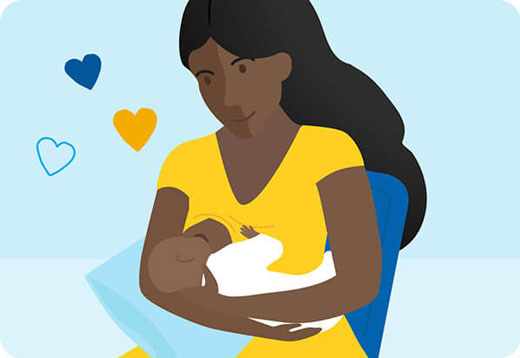
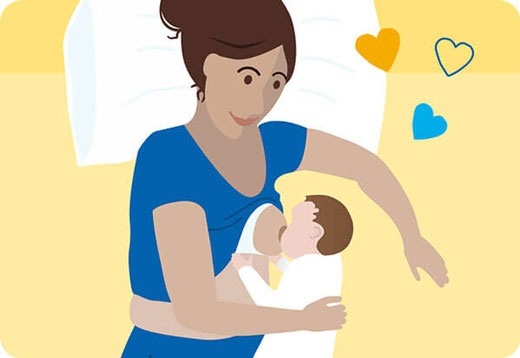
Lying down
This is a comfortable alternative position, especially at night or when sitting is uncomfortable.
Lie on your side, using one pillow to support your head and another along your back. Your head and neck should be comfortably propped up with pillows. Or lie on your side with one arm bent under your head and the other hand supporting your breast. Put a pillow or rolled-up blanket behind your baby's back. Lay your baby next to you on the bed so their mouth is aligned with your nipple
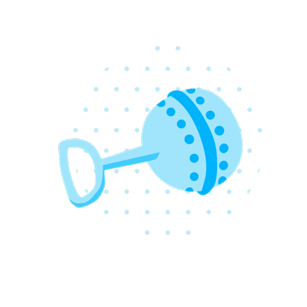
Your breastfeeding position might change over time
Even if one position works at first, many mums find different positions work better for older babies than for newborns. You might find that as your baby grows, varying how you feed helps relieve back strain. Using a footstool under your feet to help better position your baby during feedings may also help.
Similac® Support
Friendly advice at your fingertips

This website and the information contained herein is intended for use by residents of the UK. The product images are for illustrative purposes only.
©2024 Abbott Laboratories Limited. All rights reserved. Registered Number: 329102 England Registered Office: Abbott House, Vanwall Business Park, Vanwall Road, Maidenhead, Berkshire SL6 4XE
Date of preparation: August 2020









